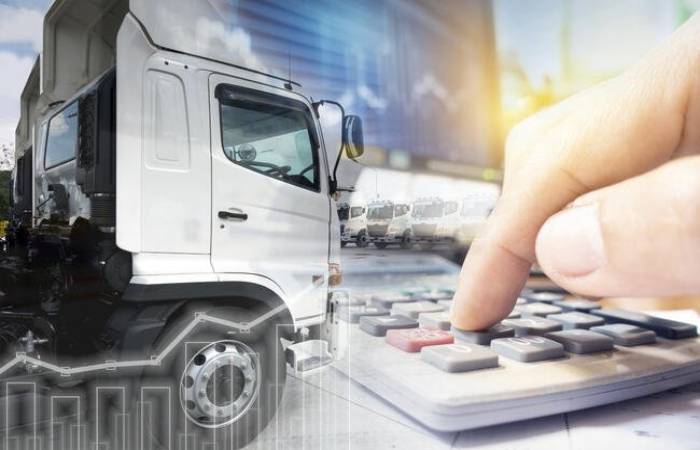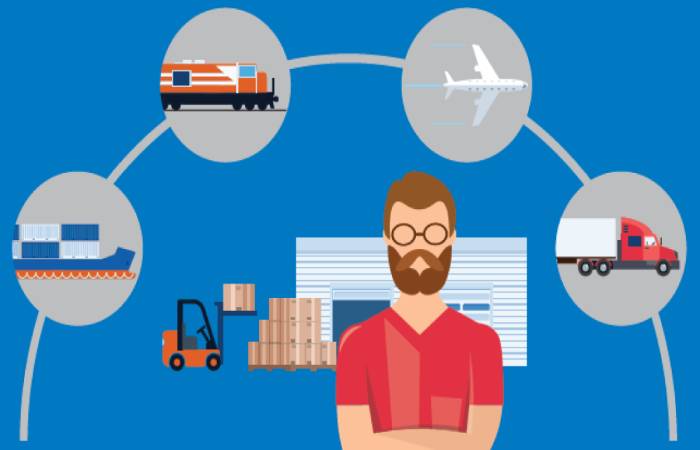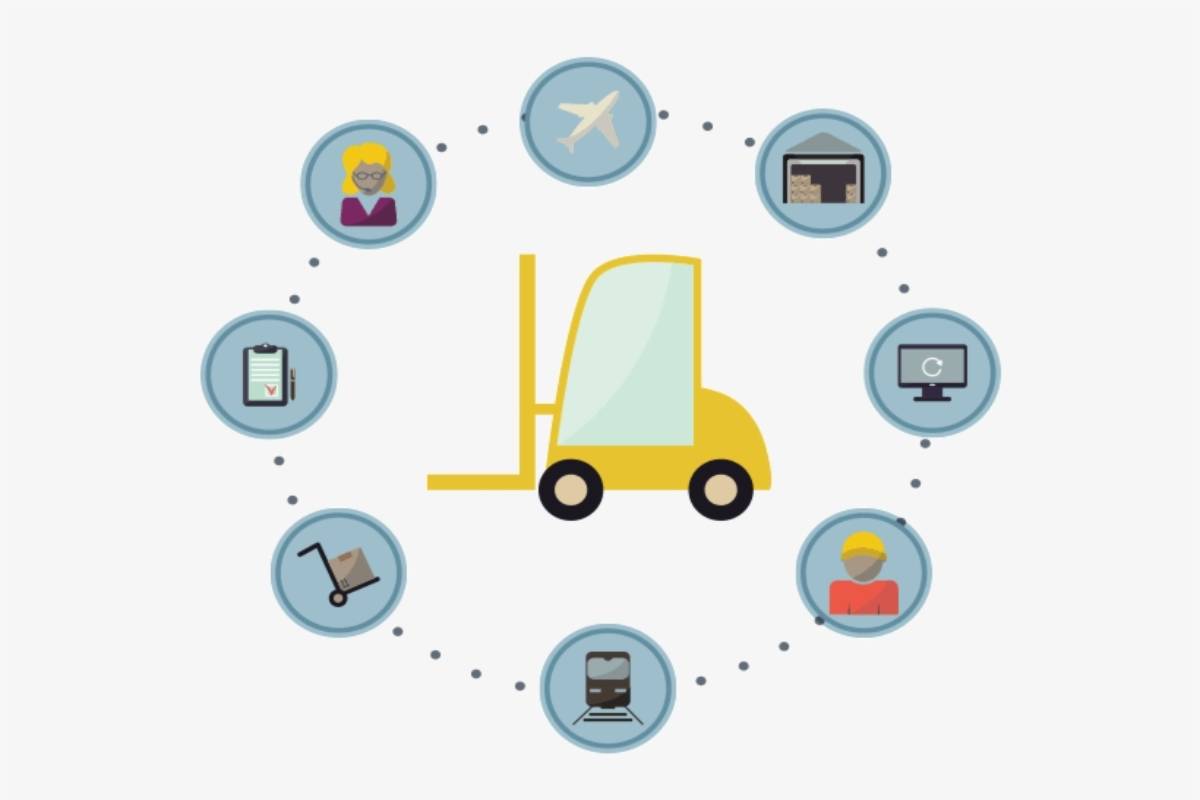Table of Contents
What Is a Transportation Management System?
A transportation management system (TMS) is a logistics platform that uses technology to help businesses plan, execute, and optimize the physical movement of goods, incoming and outgoing, and making sure the shipment is compliant, proper documentation is available. This kind of system is often part of a more extensive supply chain management (SCM) system.
Sometimes known as a transportation management solution or transportation management software, a TMS provides visibility into day-to-day transportation operations, trade compliance information and documentation, and ensuring the timely delivery of freight and goods.
Transportation management systems also streamline the shipping process and make it easier for businesses to manage and optimize their transportation operations, whether by land, air, or sea.
In addition to transportation management, other components of a typical SCM system include procurement, product lifecycle management, supply chain planning, order management, manufacturing, inventory, and warehouse management.
Why It’s Important to Have a Transportation Management System?

- Transportation management systems play a central role in supply chains, affecting every part of the process—from planning and procurement to logistics and lifecycle management.
- A robust system’s broad and deep visibility leads to more efficient transportation planning and execution, which results in higher customer satisfaction.
- That, in turn, leads to more sales, helping businesses grow. With such a dynamic global trade environment that we live and transact in, it is important to have a Best document management systems that will allow you to navigate complicated processes around trade policies and compliance successfully.
- In today’s world of same-day shipping and real-time tracking, consumers expect to get what they want, when they want it. Keeping up with this demand puts unprecedented pressure on traditional businesses, and nowhere is being felt more keenly than the supply chain.
- The physical movement of goods is a critical link in that supply chain, and more and more businesses are relying on transportation management systems to help them manage this function.
Who Uses a Transportation Management System?
Transportation management systems are primarily used by businesses that need to ship, move, and receive goods regularly, including:
- Manufacturers
- Distributors
- Ecommerce companies
- Retail businesses
Companies that provide logistics services, such as third-party and fourth-party logistics (3PL and 4PL) companies and logistics service providers (LSPs)
Businesses in nearly every industry, from construction to life sciences, use a transportation management system. The primary users are businesses that spend $100 million or more annually on freight.
Still, the availability of cloud-based TMS solutions has made it more affordable for smaller firms to take advantage of the benefits of incorporating a transportation management system into their supply chain.
Offerings of Transportation Management System
Businesses can buy a standalone transportation management system integrated with their existing cloud or on-premises enterprise resource planning (ERP) software and SCM solutions.
Some TMS solutions have trade documentation capabilities, or you can complement your TMS with a global trade management (GTM) application. Other, typically less feature-rich TMSs, are available as modules within ERP and SCM suites.
Plan, Execute and Optimize for Timely Delivery of Goods
A TMS can help any business plan, execute, and optimize the physical movement of goods.
Planning
- A TMS helps the business select the optimal shipment mode and the best carrier based on cost, efficiency, and distance, including optimizing multi-leg carrier routes. An intense TMS can provide visibility into every stage of the supply chain.
- Global trade management functionality can also provide information on trade and tariffs and any potential delays because of customs and other trade regulations.
Execution
- The execution features of transportation management systems vary widely but can include matching loads and communicating with carriers, documenting and tracking shipments, and assisting with freight billing and settlement.
- Some advanced TMS solutions also provide track and trace service. It is enabling real-time information exchange among carriers, distributors, warehouses, and customers.
- Such advanced systems may also have the functionality to handle complex international logistics, including providing proper import. And export documentation, making sure shipments are trade compliant.
Optimization
- TMS optimization capacities usually include measuring and tracking performance with reports, dashboards, analytics, and transportation intelligence.
The Benefits of a Transportation Management System

A TMS—and modern transportation management in general—provides many benefits to businesses. Some of the top services are:
- Reduced costs for the business and the end customer;
- Simplification of supply chain processes across geographies, modes, and carriers;
- Automation of business operations for faster and more accurate billing and documentation;
- Improvement in visibility and security, especially in transit;
- Time savings—fewer manual steps result in fewer delays and quicker delivery times;
- The ability to track freight, both locally and globally, on a single platform;
- Better import and export compliance minimizing penalties and shipment delays;
- New business insights as better reporting lead to faster action and process improvement;
- Improvements in customer service and customer satisfaction with real-time updates and fewer shipment delays;
- The ability to scale the business by meeting and exceeding customer demands for fast, on-time shipments.
The Added Value of a Transportation Management System in the Cloud
- A cloud-based transportation management system delivers many of the same business benefits as other cloud solutions, including improved scale economies.
- And also, the lower total cost of ownership, no upgrade fees, and a faster return on investment (ROI).
- For IT, a cloud-based TMS provides additional benefits in faster deployments, fewer hours needed for training and installation, automatic updates with the latest features, and improved security.
Transportation Management System and the Smaller Business
- Smaller businesses—those that spend $5 million to $10 million annually on freight—have traditionally relied on spreadsheets and other manual methods to manage transportation.
- But now, cloud-based solutions are making it more affordable for these smaller companies to invest in a TMS.
The Future of Transportation Management System
Customer expectations keep rising, not only for on-time deliveries but also for two-day and even same-day deliveries, with real-time updates throughout the shipment process.
Over-changing global trade regulations also force supply chains to innovate to keep pace, often by investing in a transportation management system.
Transportation management systems must become more robust and feature-rich, providing faster responses to consumers and more detailed information to businesses. And also, machine learning enables TMSs to be more intelligent, providing better recommendations and accurate predictions.
Companies can choose to integrate their transportation and global trade management systems with emerging technologies to improve visibility further and offer better customer service. And also, some of these innovative technologies that are currently available include:
1. IoT Fleet Monitoring
- Internet of things (IoT) devices and sensors make real-time fleet monitoring commonplace. It including in-transit visibility of driving conditions, routes, and assets.
- And also, companies can lower their fuel and maintenance costs and reduce delays and improve driver safety.
2. Digital Assistants
Digital assistants are often called chatbots and offer immediate, conversational responses to shipment information, leading to higher customer satisfaction.
3. Adaptive Intelligence and Machine Learning
- By applying machine learning to historical data and trends. Transportation management systems can predict transit time more accurately, plan capacity, identify at-risk shipments (such as goods about to expire.
- And also, time- or temperature-sensitive products), and much more.
- Enhanced artificial intelligence will also enable your TMS to provide more accurate. And also, informed recommendations, such as alternate delivery routes during high traffic periods.
4. Blockchain
- Blockchains are now being utilized to build complex integrations among shippers, customers, and carriers.
- Applications such as intelligent track and trace increase transparency. And also, traceability across your supply chain and ensure accurate and secure information.
5. Cold Chain Management
- Another blockchain solution available in transportation management systems is cold chain management. This is useful when different temperatures must maintain at various checkpoints along the supply chain.
- For instance, perishable or temperature-sensitive materials and products might need to be kept at a cool temperature in the truck but slightly higher on store shelves.
- With cold chain management, the temperature can be monitored across the supply chain, with real-time information provided to the business and the regulators at the country of origin.
Conclusion
A transportation management system, or “TMS,” is a platform that’s designed to streamline the shipping process. It is a subset of supply chain management concerning transportation solutions.
A TMS allows shippers to automate the techniques they have in place. And also, receive valuable insights to save time and reduce spend on future shipments.


